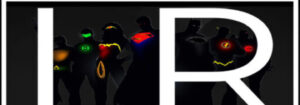I wouldn’t have read this book much less found it if I hadn’t been a fan of the texts and discourses of philosophers like Rajneesh Osho, Jiddu Krishnamurti, and Sadhguru. I discovered Eckhart Tolle via his YouTube channel and I have been an avid admirer of his works ever since.
What is The Power of Now?
The Power of Now (2004) is a spiritual self-help book written by Eckhart Tolle that stresses on the importance of living in the moment as the key to peace and serenity in an individual’s life.
The book contains spiritual guidance with elements of mysticism and references to religions like Buddhism and Christianity, although not being a religious book per se.
For the most part, besides unnecessary spirituality and lack of concrete proof, the message conveyed by Tolle under all this writing is beautiful and is a good reminder for everyone in this modern age, who has their mind overrun by the chaos of the present world, to enjoy life in the present. Tolle manages to do this through his use of simple language, effective visualization and an easy-to-understand question answer format.
The Message
The message conveyed so beautifully in The Power of Now is pretty simple: staying in the present moment is the key to inner peace, and yet it made me realize how most of us have always been blind to it.
Tolle first explains to readers why the present moment is so important and effectively says how all problems come from the mind’s constant turmoil from being stuck in the past and in the future. Then he tries to show us how we can access the so-called Power of Now step-by-step, all the while constantly reminding us of the original message through repetition.
This felt like a curtain being drawn open in my mind showing me a completely new way of looking at life which I hope can transform my life for the better. While the overall message in this book is beautiful, it is not without its flaws. For starters, there is too much spiritual language used in the book which tends to make the message convoluted and messy, and I found myself doubting it because it started to sound, at times, like a fanatical religion.
He uses this to make claims that are not proven by science and then even at times, rejects science in his book saying that any theory can be made to prove claims (which is ironic since spirituality works the same way). This bloated use of spirituality is also meaningless, since most of what his message contains can be explained with simple psychology.
It is also dangerous, because it makes it easy to misunderstand what is being said and if readers start implementing his advice wrongfully, it can end up in further turmoil for them. Additionally, there is some oversimplification of problems too, such as claiming all problems in history are caused by the mind not being present which in my opinion is a very bold claim without solid proof.
The Language
Tolle’s language used in this book is excellent and is one of the things that instantly shines in this book. He uses simple language that makes whatever he says easy to understand, making his message accessible to anyone who can read English. It is also a pleasure to read as the words flow and before you know it, you’ve read through so many pages tackling a complex subject with ease.
His language use also makes it very easy to visualize, which further helps in making readers understand the complex topics tackled in this book. In particular, I was shocked by how accurately he wrote about thought processes of the mind and I have never seen anyone illustrate them so well before, and I found myself warming up to him and relating to it.
Additionally, the question answer format used by Tolle is very effective because he essentially clears any questions readers may have about the message by having it presented as answers to questions in the first place.
The Verdict
Overall, the message presented by Tolle is beautiful and potentially life-changing, and is done so effectively through his language and format use. I would absolutely recommend people try out this book. However, too much spirituality, oversimplifications and lack of proof ends up, at times, undermining the written content that is used to convey the message of always staying mindful of the present.
The Rating
4 out of 5.


